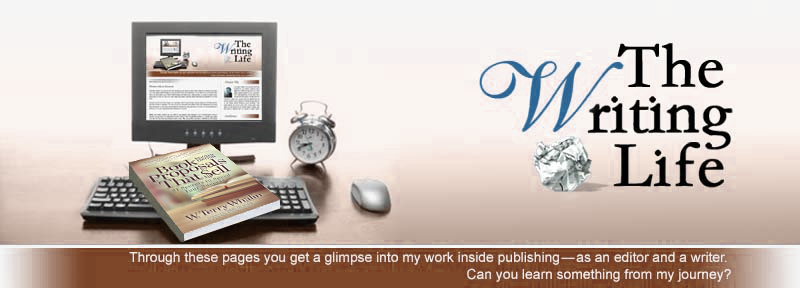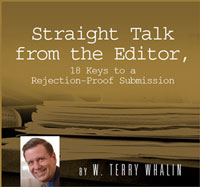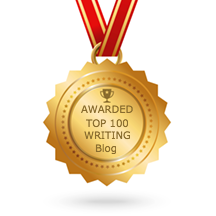A Different Perspective
For many years, I’ve been studying how to write a book proposal. I’ve written more than a few of them plus I’ve received hundreds of them from writers (because of my role as an acquisitions editor). Yet there is always a different perspective on the same topic and more to learn.
This week I posted Ten Factors to Consider When Writing Book Proposals by Dr. Dennis E. Hensley. He includes a different twist on some of the standard elements. For example, consider the element of neatness and Doc Hensley writes, “You only get one chance to make a good first impression, so it had better be your best effort. Dog-eared pages, erasure smudges, strike-overs, faded ribbons and correction fluid smears are sure indications that the manuscript has been passed around. Make sure that the manuscript smacks of professionalism. Use #16 or #20 weight Bond white paper, and be sure to have an ink cartridge in your computer printer that is full and dark.”
You may not think the editor will noticed that dog-eared submission—but we do notice.
I love the opening story in this article (don’t miss it). It points out a common fallacy that writers have about acquisitions editors at a publishing house. These writers wrongly believe if their proposal isn’t just right on the mark then the editor can “fix it.” Why? They think that is how editors fill their days. Wrong.
As an editor, it doesn’t take much time to learn your day is filled with many different responsibilities from the publishing house. I explore these aspects in-depth in Book Proposals That Sell. I recommend every writer read this chapter and understand the stress and pressure from their editor. It will spur you to excellence with your submissions.
Some times, I see a glimmer of something that interests me in a proposal. Yet there is no time in my schedule to pull out glimmers and recraft them into a full-blown-gotta-buy-this-one type of idea. If a proposal comes in about 75% to 85% of the way to the target, then it is a wise investment of my time and energy to push it the rest of the journey. Squeezing this last 15% to 25% often takes a lot of time but if it results in a book contract and an excellent product for my publishing house, then it’s worth the effort.
OK, now go back and think about your proposal and your expectations for what the editor will do. If your idea is anything less than almost perfect for the publisher, I can practically guarantee it will be rejected and returned. The days of an editor working back and forth to help a writer craft their proposal are gone. The volume of submissions and the paper flow is too great to do anything else other than send a form rejection letter.
My encouragement for every writer is to polish your proposal to perfection—before you stuff it in the envelope and send it to the publishing house.





















1 Comment:
To "Anonymous Editor": Your comments will continually be deleted--since they are inappropriate. Send an email directly to me rather than these back handed posts(terry@terrywhalin.com). I look forward to it.
And if they continue? I will be forced to eliminate the possibility of posting comments.
Terry
Post a Comment
That's the writing life...
Back to the home page...